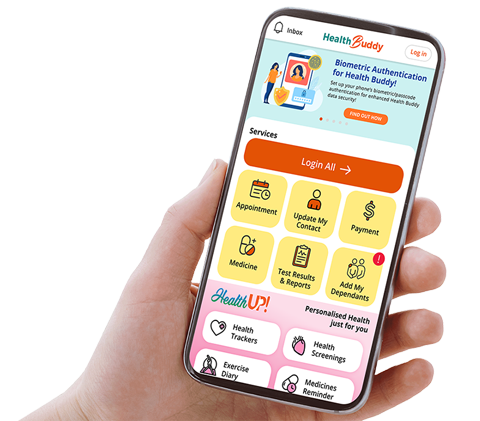National Neuroscience Institute will NEVER ask you to transfer money over a call. If in doubt, call the 24/7 ScamShield helpline at 1799, or visit the ScamShield website at www.scamshield.gov.sg.
Neuroradiology
- Computed Tomography (CT) Scan
- Magnetic Resonance Imaging (MRI)
- Catheter Angiography (CA)
- Interventional Neuroradiology
- Specialised Neuroradiology Service

Figure 1 Image produced by a CT
CT scan uses x-rays to produce cross-sectional images of the body. It helps to detect strokes, brain aneurysms (bulge or balloon in the blood vessel), arteriovenous malformations (abnormal tangle of blood vessels), bleeding in the brain, head injuries, dementia, and spine and spinal diseases.
Click here for more information on CT scans and what you should take note of for your visit.
Magnetic Resonance Imaging (MRI)

Figure 2 Image produced by an MRI
MRI is a non-invasive medical imaging test that uses magnetic fields and radiofrequency waves to see inside the body. It is used to detect brain tumours, traumatic head injury, developmental anomalies, multiple sclerosis, stroke, dementia, infections, brain aneurysms and arteriovenous malformations.
The Department has scanners of varying magnetic strength, from a 1.5 Telsa whole body system suitable for children to a 3.0 Telsa whole body system for faster and more detailed imaging.
Click here for more information and what to expect during the MRI procedure.

Figure 3 Image produced by a CA
A CA is a minimally-invasive test that uses x-rays and a contrast material to produce pictures of blood vessels in the brain and spine for diagnosis and treatment. A contrast is a special dye that is injected into veins on the arms or hands to improve the image quality and aid diagnosis.
A CA helps detect brain aneurysms, outline blood vessel malformations, investigate diseases of the vessels and provide additional information on abnormalities seen in MRI or CT scans.
Click here for more information and tips.
Interventional Neuroradiology
In some cases, procedures may be needed to treat conditions detected by a catheter angiography.
- Embolisation
- Treat the brain aneurysm, or close the aneurysm sac by filling it with a material (coil stent) to reduce the risk of bleeding
- Block abnormal blood vessels
- Reduce blood supply in brain tumour patients before surgery
- Endovascular Therapy
- Remove clots in patients who suffered an acute ischemic stroke
Contact Information
Department of Neuroradiology, National Neuroscience Institute
(65) 6330 6363 (Outpatient)
Our Care Team
In The News

Keep Healthy With
© 2025 SingHealth Group. All Rights Reserved.
















